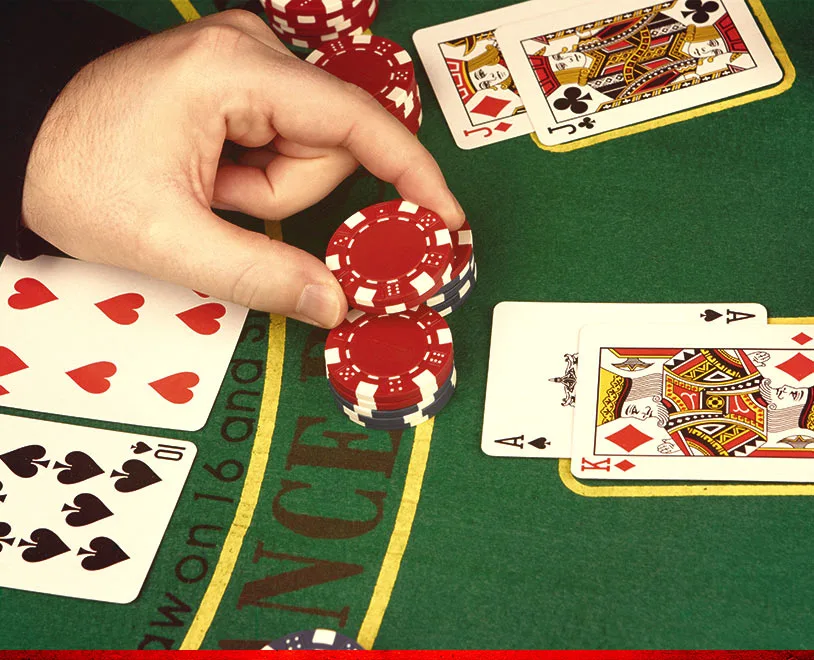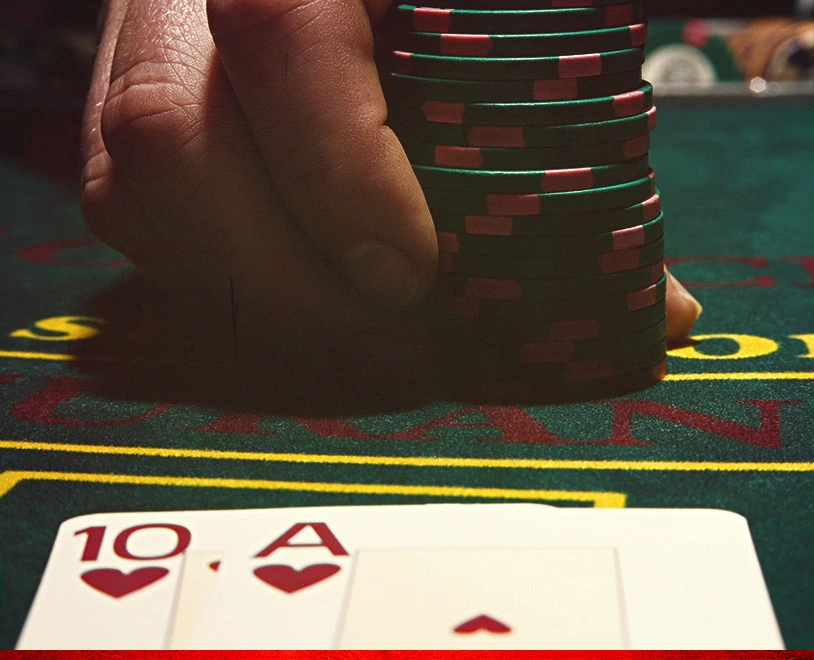Basic Blackjack Rules
Here’s the deal: The first step to mastering blackjack games is learning the rules inside out. Not all rules are equal, so knowing which ones lead to money on the felt will improve your odds of winning big – which is exactly what you want with real money casino games.
Think you know your stuff? Show us what you got and play blackjack at Ignition now. Once you’ve established how to identify the best blackjack games and have a thorough understanding of how to play them, you can move onto the next step of becoming a blackjack pro: learning basic strategy.
Blackjack Basics
To get started, in the Blackjack section of our casino, we have two standard six-deck versions that share six rules. These rules vary slightly from the standard US blackjack rules, which use eight decks, have the Dealer standing on soft 17, and allow the Player to double after splitting.
1) Dealer hits on soft 17.
Aces are worth 1 point or 11 points, and a soft hand has an Ace that’s worth 11 points. An example of a soft 17 would be a Six and an 11-point Ace for 17 points. That Ace can still be converted to a 1-point Ace if need be, which makes the total soft. In our two standard versions of blackjack, the Dealer hits these hands, but stands on hard 17’s and above. An example of a hard 17 would be an Eight, Seven, and two 1-point Aces.
2) Six Decks, Reshuffled.
Our two standard blackjack games use six decks that are shuffled after each hand. Shuffling after each hand prevents card counting.
3) Blackjacks pay $3 on every $2-bet (and multiples thereof).
Although standard blackjack wins pay even-money, getting a valuable Blackjack hand (hand that equals 21 – must be your original two-card hand) pays 3-to-2, meaning you’d get $7.50 on a $5 bet.
4) Rules for splitting hands.
In most blackjack games, you can split up to three hands. Split hands are possible when you receive pairs – you can split each card into a new hand, creating two hands out of one. Note: the new hand will require another bet that’s equal to your original bet.
When the rule says you can split up to three hands, that means you can have a total of three split hands per round; it doesn’t mean you can split three times (which would give you four split hands).
Splitting provides a big advantage, so there are some additional rules that control how it’s done – specifically around split Aces. In all our versions of blackjack, after splitting Aces, you are dealt just one card – then it’s showtime. If you receive another Ace upon splitting Aces, you cannot re-split them. Also, if you receive a 10-value card, your hand isn’t technically Blackjack since it’s not your original two-card hand. Consequently, you’d receive the standard even-money payout for it.
5) Rules for Insurance.
The Insurance bet is offered when the Dealer shows an Ace. It pays $2 for every $1-bet when the Dealer has Blackjack. Insurance bets are always exactly half of the original wager, so you’d win the same amount that you’d lose if the Dealer has Blackjack. If the Dealer doesn’t have Blackjack, you lose the Insurance bet and carry on in the round.
6) Rules for Surrender.
In blackjack, the standard surrender is a “late surrender,” which means you can surrender your cards and forfeit the round after the Dealer checks his hand for Blackjack. Keep in mind, surrendering your cards also means surrendering half your wager, which goes to the house.

How to Play Blackjack
The trick is to outscore and outsmart the dealer – up to a max of 21 points. If either you or the Dealer hit 22 points or more, you automatically lose, which is called a bust. A push happens when you can the Dealer have the same score, resulting in your wager being returned to you.
In order to increase your score, you request more cards by hitting. You may hit over and over again – until you decide to stand, or unfortunately go over 21 points.
In order to keep your score as is, you stand, at which point, your cards are compared to the Dealer’s cards. You can stand after multiple hits, or even without hitting at all.
There are a few additional moves in blackjack beyond the basic hit or stand options (which you can check out our blackjack FAQ). One valuable move is the double down option, which doubles your bet size and gets you another card. Doubling your wager means you’d win double the payout since standard wins are paid 1-to-1. You automatically stand after receiving the additional double down card.
Splitting is another valuable tool that lets you divide a two-card hand into separate hands. The only catch is that you get the option to split only when you receive a pair in your two-card hand. One blackjack tip is to use this option to divide a 16-point hand (two Eights) into something stronger.
If you’re dealt garbage right at the start, you may not want to pursue the round at all. You can muck your hand with the surrender option, which is available with our Six Deck versions of blackjack, but not our Single and Double Deck versions. You’ll lose half your wager upon surrendering, but it’s better than losing the whole thing.

Blackjack Etiquette
Yup, no one likes a noob on the tables. Knowing how to play blackjack before sitting down at a table is considered proper etiquette, as it can be quite disruptive when beginners inundate the Dealer with questions. Reading this guide is a great start to learning how to play before jumping in. Additionally, you can use Practice Play mode at Ignition to get your feet wet virtually, before playing with others in a live and fast-paced casino.
In addition to learning the rules of the game before sitting down, knowing the blackjack hand signals will help you integrate into a table without ruffling any feathers. You can do this by observing players before joining in, but we’ll also summarize the basic hand signals for face up blackjack* here:
• To hit, tap the felt with your finger.
• To stand, wave your straightened hand from one side to the other above your cards.
• To double or split, place a second wager that’s the same amount as your original wager beside your bet.
Face Up Blackjack is the norm in most casinos. Your cards are dealt to you face up. Refrain from touching your cards when playing.
Blackjack 21
Before blackjack made its way to North America, it was called Vingt-et-Un, which is French for 21. The name changed to blackjack when casinos offered a bonus payout for getting a Jack of spades or clubs along with an Ace for a perfect score of 21 (not that suits affect the score). Now the term “Blackjack” refers to any score of 21 in your original 2-card hand. Most casinos offer 3-to-2 payouts for these sought-after hands.

Blackjack Odds
When playing six-deck blackjack where the Dealer stands on soft 17, there are no limits on when you can double, surrender is an option, you can re-split Aces and split up to four hands, the odds of winning any given hand is roughly 42%. The odds of losing is 49%, and the odds of tying is approximately 8%.
House Edge
When playing blackjack with proper basic strategy, you can whittle the house edge down to 0.53% for our six-deck versions, 0.076% for our Single Deck version, and 0.23% for our Double Deck version. Compare that with a player who simply stands on 17 and above, not taking advantage of splitting and doubling options, and you get a house edge of 5.4%.
Blackjack Rule Variations
With so many varying rules for blackjack, it can be hard to tell what’s helpful and what’s not. We’ve classified every rule variation as either Player Friendly or House Friendly to help you determine which blackjack games will give you the most bang for your buck. We've also produced a blackjack tips section to give you additional information.
Dealer Stands on Soft 17 – Player Friendly
Dealer Hits on Soft 17 – House Friendly
Single and Double Deck – Player Friendly
Six and Eight Decks – House Friendly
Player can Double on any Two Cards – Player Friendly
Double is Restricted to Specified Cards – House Friendly
Re-Split Aces Allowed – Player Friendly
No Re-Splitting Aces – House Friendly
Blackjack Pays 3-to-2 – Player Friendly
Blackjack Pays 6-to-5 – House Friendly
Late Surrender – Player Friendly
No Surrender – House Friendly
Double After Split – Player Friendly
No Double After Split – House Friendly
Split to Four Hands – Payer Friendly
Split to Three Hands – Neutral
Split to Two Hands – House Friendly
Keep these rules in mind when picking a blackjack game to play online or in a live casino. The worst thing you can do is sit down to a game that pays 6-to-5 for Blackjack and try to make a profit, as this rule variation subtracts close to 1.4% from your winnings. Play smart and you’ll find a good balance between entertainment and potential profit, allowing you to make the most of your bankroll.
